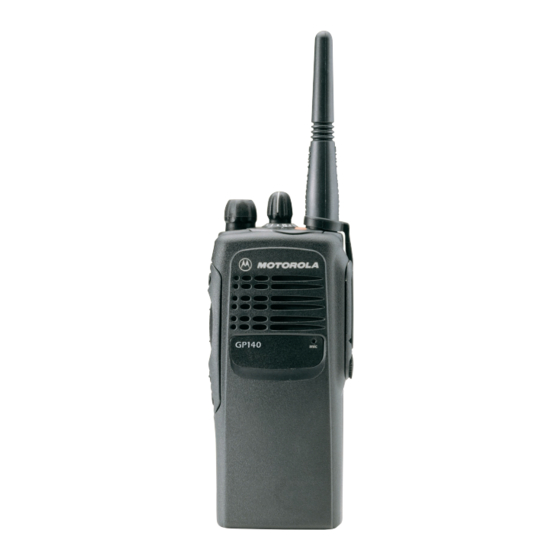2-4
3.2
Receiver Back-End
(Refer to the Receiver Back End schematic diagram)
The output of crystal filter FL301 is connected to the input of IF amplifier transistor U301.
Components L303 and C348 and R301 form the termination for the crystal filter and the signal is
coupled to one gate of U301 by C303. The IF amplifier is a dual gate MOSFET powered off of the 5
volt supply. The first gate receives the IF signal as indicated previously. The second gate receives a
DC voltage from U302 which serves as an AGC control signal. This signal reduces the gain of the IF
amplifier to prevent overload of the IF IC, U303. The gain can be varied from a maximum of 13 dB to
an attenuation of 55 dB. The output IF signal from U301 is coupled into U303 (pin 3) via C306, R304
and L304 which provides matching for the IF amplifier and U303.
The IF signal applied to pin 3 of U303 is amplified, down-converted, filtered, and demodulated, to
produce recovered audio at pin 27 of U303. This IF IC is electronically programmable, and the
amount of filtering, which is dependent on the radio channel spacing, is controlled by the
microprocessor. Additional filtering, once externally provided by the conventional ceramic filters, is
replaced by internal filters in IF IC U303.
The IF IC uses a type of direct conversion process, whereby the externally generated second LO
frequency is divided by two in U303 so that it is very close to the first IF frequency. The IF IC (U303)
synthesizes the second LO and phase-locks the VCO to track the first IF frequency. The second LO
is designed to oscillate at twice the first IF frequency because of the divide-by-two function in the
IF IC.
In the absence of an IF signal, the VCO searches for a frequency, or its frequency will vary close to
twice the IF frequency. When an IF signal is received, the VCO locks onto the IF signal. The second
LO/VCO is a Colpitts oscillator built around transistor Q301. The VCO has a varactor diode, CR301,
to adjust the VCO frequency. The control signal for the varactor is derived from a loop filter
consisting of components C308, C309, and R310.
The IF IC (U303) also performs several other functions. It provides a received signal-strength
indicator (RSSI) and a squelch output. The RSSI voltage is also used to control the automatic gain
control (AGC) circuit at the back end.
The demodulated signal on pin 27 of U303 is also used for squelch control. The signal is routed to
U404 (ASFIC) where squelch signal shaping and detection takes place. The demodulated audio
signal is also routed to U404 for processing before going to the audio amplifier for amplification.
3.3
Automatic Gain Control (AGC)
(Refer to the Receiver Front End and Receiver Back End schematic diagrams)
The automatic gain control circuit provides automatic reduction of gain to prevent overloading of
backend circuits. This is achieved by lowering the voltage on one gate of U301 which will reduce the
drain current in that part and lower its gain.
The Radio Signal Strength Indicator (RSS I) voltage signal for the IF IC (U303) is used to drive the
AGC processing circuitry consisting of R306, R307, R308, R309, C307 and U302. As the received
signal gets stronger, the RSSI line will rise. When the RSSI line passes a certain threshold, the
voltage at the output of U302 will begin to drop. This voltage is connected to one gate of IF amplifier
U301 through resistor R305. As this voltage decreases, it will lower the drain current in U301 and
reduce the gain of the stage. This will limit the power incident on the IF IC, U303.
THEORY OF OPERATION

